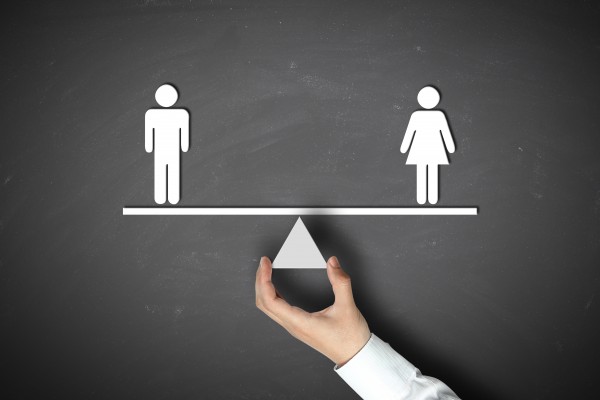Women’s Equality: Blame Won’t Get Us There
Today is Women’s Equality Day. I’m glad that this day exists. It commemorates the game-changing moment, 95 years ago today, when women gained the constitutional right to vote in the US. It’s important to celebrate that and to remember that there are still many women in the world without a political voice.
But I’m also sad that there’s a Women’s Equality Day, because it confirms that true gender equality still eludes us. Whether it’s a moral issue or a business issue for you, equality matters. And it’s painful to confront the distance we have yet to travel.
As we connect with our disappointment, it’s tempting to assign blame for why things are the way they are. But in my experience, blame doesn’t get us anywhere we really want. Why? Because it slams shut the possibility for change. While blamers are finding fault, blamees are attacking back or running for cover. Meanwhile, nobody’s learning. And if nobody’s learning, nothing’s changing. As one male client, who cares very much about women’s equality, said to me:
I live in fear of saying the wrong thing and being labeled an insensitive jerk. So I disengage; I stay quiet instead of speaking up; I play it safe and keep my distance.
Even this man, a staunch believer in women’s equality, shuts down for fear of incurring the blame blowback of ‘getting it wrong.’ That means that he doesn’t engage, doesn’t grow and doesn’t work for change.
How do we confront bias against women (and other so-called minority groups) in such a way that opens up mutual understanding, accountability and action? I think we start by changing how we relate to bias itself: not so much as someone’s fault, but rather as a shared phenomenon in which we’re all participating. It’s not that there isn’t fault to find; it’s just that fault-finding doesn’t seem to get us anywhere.
Bias is the result of a convergence of both personal and systemic influences:
- individual beliefs and values
- individual behavior
- culture: collective values, mindsets and patterns of behavior
- structures: the policies, laws, physical and organizational structures, media, etc. that we build to carry out what the culture values
These influences interact dynamically, continually affecting and being affected by each other. After years of history and habit, these influences weave tightly together to form very solid social patterns. Some of us benefit from those social patterns and strive, consciously or unconsciously, to keep them intact. Others of us aren’t well served by the patterns and we rail against them. And as we’re protecting or railing, it’s natural to fault each other for being oppressors or malcontents.
… As if the mud-slinging will help. As if the problem lies only in our personal shortcomings. As if the solution were that one-dimensional.
In the quest for gender equity in organizational life, the questions are larger than “Whose fault is it?” And the stocktaking needs to be done by men and women alike. Based on the four influences above, here are some questions that we can engage in together to examine and shift the complicated phenomenon of bias.
Personal beliefs
- Are there certain behaviors that I tolerate in men that I recoil at in women? Or vice versa? What do those differing reactions tell me about what I deem “OK” and “not OK” from each gender?
- How does that impact my openness to people as they are?
- Do I ever expect more or less from women than I do from men? If so, what assumptions are driving the difference in my expectations?
As a result of this inquiry: Which of my beliefs and assumptions most inhibit a fuller openness to women, and how can I start challenging those beliefs?
Personal actions
- Are there women that I could or should be advocating for that I don’t? Why don’t I?
- Have I ever shied away from giving a woman feedback that might have helped her succeed? And if I did give feedback, was it specific and behavioral enough to enable her to take clear action?
- Who tends to sway my opinions and thinking most often? Is there a gender dimension to who I listen to and don’t?
As a result of this inquiry: What one or two things can I start or stop doing to more actively support the women I live and work with?
Culture
- Are there customs, events or practices in our organization that women don’t seem to attend or fully participate in? Might that indicate that these practices are exclusionary in some way?
- Do we use language or ways of communicating that might exclude women or make them feel uncomfortable? How would we know?
- When women have raised concerns about how they’re treated, how quickly or consistently have we taken action to address them? Have we given negative labels to women who have expressed their discontent?
- Who are the formal leaders and informal power brokers in our organization? If women are sparse there, what might that tell us about the exclusive nature of our culture’s values?
As a result of this inquiry: What one or two of our patterns of collective behavior most work against a level playing field for men and women? What new patterns do we want to establish? How will we hold ourselves and each other accountable?
Structures
- Do any of our employment, promotion, performance management or development practices make it harder for women than men to excel or advance?
- Have we established mechanisms to measure whether men and women experience this organization differently?
- Are more women than men leaving the organization? If so, what do they tell us in their exit interviews? If they say it’s “Too late” to give feedback, what were the signals that we missed along the way?
As a result of this inquiry: Which of our practices and policies seem to create barriers to women’s success? How should we update those practices to support an equality agenda? How do we ensure that our structures are continually updated to reflect our changing cultural values?
Blame is the quickest way I know to stop the journey toward equality. By looking at bias as a shared phenomenon, rather than as someone’s fault, we can step out of the fray and get curious about our patterns of interaction. Perhaps then we can look at bias together, without finding fault, and martial our collective creativity toward the equality that most of us really want.




Hello Leslie. I agree with your concept of a collaborative approach to a solution. I launched a non-profit to try to do this. Please check it out and give me your thoughts. ShowMe50.org http://www.showme50.org/action-toolkits-to-drive-change-at-your-company/ The challenge is that men and women are afraid to speak out about gender at work because they are penalized for it. So it creates a vicious cycle that is difficult to break. We need a few brave women and men to join together inside every corporation. Power in numbers. But not easy.
Thanks! I’ll definitely check your organization out. Thanks for doing the good work.
Thanks for this, Leslie.
I love that you opened with your glad/sad response around the concept of and need for Women’s Equality Day, and then moved into the ineffectively infinite loops of blamers and blamees. In my direct experience, your male client’s final sentence, “I play it safe and keep my distance,” which I 100% understand and have practiced at times, speaks to the illusion that “safety” actually exists in this or any topic. I’m reminded of Audre Lorde’s words, “I was going to die, if not sooner then later, whether or not I had ever spoken myself. My silences had not protected me. Your silence will not protect you.” Strong medicine, and often not easy to swallow.
Your breaking this conversation down into the four personal and systemic influences is immensely helpful. Again, thanks for your work and the thoughtfulness and clarity in your writing.
Reggie, thank you for your comments. Our ongoing conversations and collaboration are helping both to sharpen and to expand my thinking. I love your point that safety in silence is an illusion, and Audre Lorde echoes that with such power.
Wow Leslie and Reggie, what a rich exchange. Here are my thoughts: safety doesn’t exist: nor does it not exist. It’s relative, and attunement to its ebbs and flows, and who are its chief benefactors, is a deep part of diversity work.
Men fearing disapproval from the women in the room doesn’t add up to much potential for change if there are relatively few women in the room. When there’s balance in the numbers and seniority of women compared with men, the question of who gets to speak and who is listened to, and who is blamed and who is allowed to indulge their desire to blame, begin to look quite different.
So yes, I’d see the subjective experiences and acts of blaming and silencing, feeling blamed and silenced, as entirely workable from a coaching point of view regardless of the gender/orientation of the client; and most powerful in an organisational context if gender balance is being addressed at the same time.